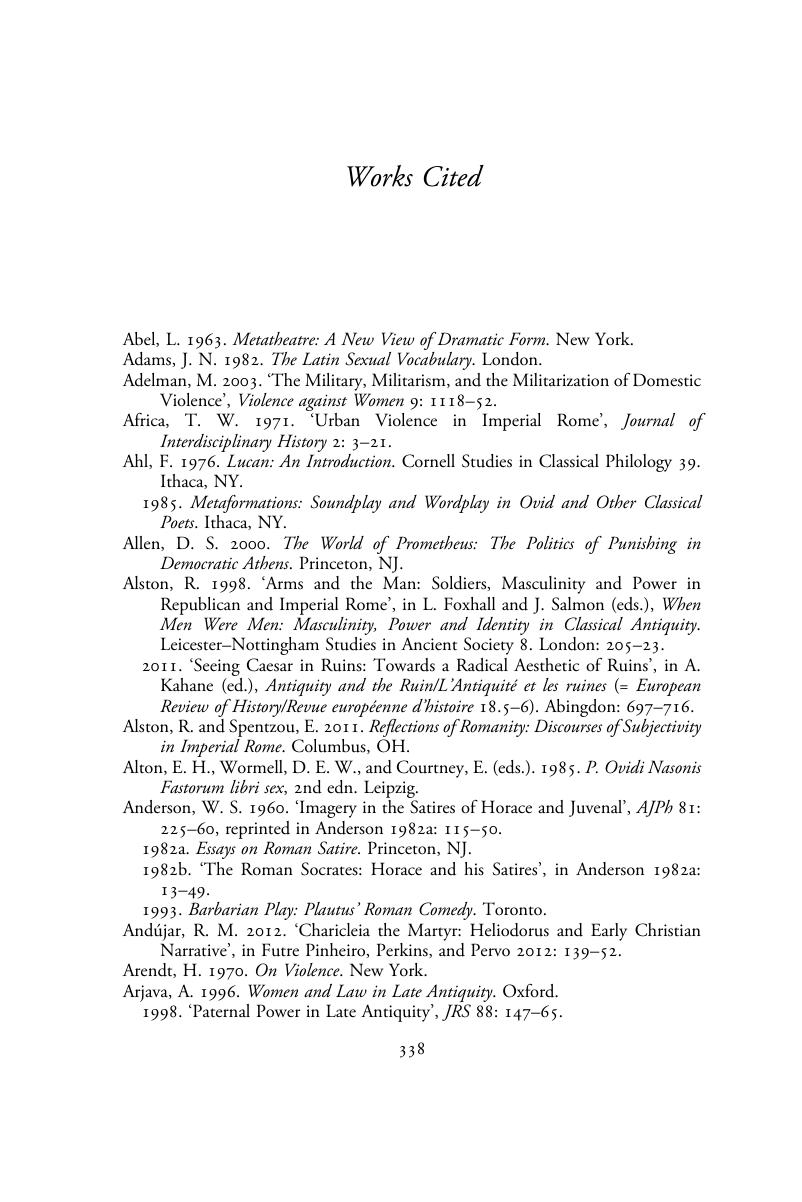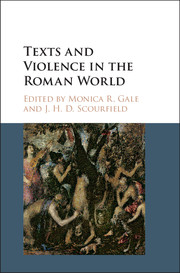Book contents
- Texts and Violence in the Roman World
- Texts and Violence in the Roman World
- Copyright page
- Dedication
- Contents
- Notes on Contributors
- Preface
- Abbreviations
- Introduction
- Chapter 1 Comic Violence and the Citizen Body
- Chapter 2 Contemplating Violence
- Chapter 3 Discipline and Punish
- Chapter 4 Make War Not Love
- Chapter 5 Violence and Resistance in Ovid’s Metamorphoses
- Chapter 6 Tales of the Unexpurgated (Cert PG)
- Chapter 7 Dismemberment and the Critics
- Chapter 8 Violence and Alienation in Lucan’s Pharsalia
- Chapter 9 Tacitus and the Language of Violence
- Chapter 10 Cruel Narrative
- Chapter 11 Violence and the Christian Heroine
- Works Cited
- Index
- References
Works Cited
Published online by Cambridge University Press: 29 March 2018
- Texts and Violence in the Roman World
- Texts and Violence in the Roman World
- Copyright page
- Dedication
- Contents
- Notes on Contributors
- Preface
- Abbreviations
- Introduction
- Chapter 1 Comic Violence and the Citizen Body
- Chapter 2 Contemplating Violence
- Chapter 3 Discipline and Punish
- Chapter 4 Make War Not Love
- Chapter 5 Violence and Resistance in Ovid’s Metamorphoses
- Chapter 6 Tales of the Unexpurgated (Cert PG)
- Chapter 7 Dismemberment and the Critics
- Chapter 8 Violence and Alienation in Lucan’s Pharsalia
- Chapter 9 Tacitus and the Language of Violence
- Chapter 10 Cruel Narrative
- Chapter 11 Violence and the Christian Heroine
- Works Cited
- Index
- References
Summary

- Type
- Chapter
- Information
- Texts and Violence in the Roman World , pp. 338 - 373Publisher: Cambridge University PressPrint publication year: 2018

